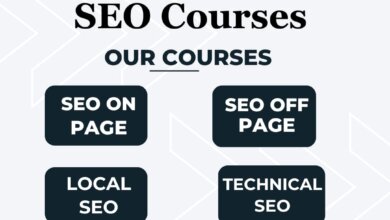Ghost Commerce vs Traditional E-commerce: Which is Better?

The landscape of online selling methods is evolving faster than ever. With the rise of social media, faceless brands, and automation tools, entrepreneurs are finding new ways to profit from digital commerce. One such method gaining serious traction in 2025 is ghost commerce — a low-barrier, faceless business model. But how does it really compare to traditional e-commerce?

In this blog, we’ll break down the key differences between ghost commerce vs ecommerce, explore the pros and cons of both, and help you decide which model suits your goals best.
What is Ghost Commerce?
Ghost commerce is a modern online selling method where individuals earn revenue by promoting products anonymously — without ever owning, storing, or shipping them. It’s often associated with affiliate marketing, dropshipping, or digital product promotion, but the main distinction lies in its faceless, brand-agnostic approach.
Typically, ghost commerce entrepreneurs:
- Run faceless TikTok or Instagram accounts
- Promote products through affiliate links or dropshipping partnerships
- Leverage trends, automation, and short-form content to drive traffic
- Use AI tools for content generation, video creation, or website management
- Earn commissions per sale without direct customer interaction
It’s low-cost, low-risk, and increasingly popular among Gen Z and new-age creators who prefer not to show their face or invest heavily upfront.
What is Traditional E-commerce?
Traditional e-commerce refers to the conventional model of selling physical or digital products through an online store. Business owners take full control of the buying journey, including branding, inventory, shipping, and customer support.
In this model, sellers:
- Build a branded website (via Shopify, WooCommerce, etc.)
- Source or manufacture products
- Manage inventory and logistics
- Handle customer service and returns
- Build trust and loyalty through long-term brand development
Traditional e-commerce can lead to higher profits and greater brand equity but requires more upfront investment and ongoing operations.
Ghost Commerce vs E-commerce: A Side-by-Side Comparison
| Feature | Ghost Commerce | Traditional E-commerce |
|---|---|---|
| Inventory | No | Yes |
| Startup Cost | Very low | Moderate to high |
| Branding | Faceless or anonymous | Personal or company branding |
| Customer Interaction | None | Full responsibility |
| Profit Margin | Lower (commission-based) | Higher (you set pricing) |
| Platform Risk | High (dependent on social platforms) | Lower (owned website) |
| Trust Factor | Lower | Higher |
| Business Scalability | High (but platform-reliant) | High (but resource-heavy) |
Benefits of Ghost Commerce
-
Low Barrier to Entry
Ghost commerce is perfect for beginners. You don’t need a warehouse, product, or even a personal brand to start. A smartphone, a few good tools, and access to trending products can get you going. -
No Logistics or Fulfillment Hassles
Since you’re not shipping anything yourself, there’s no stress around inventory, packaging, or delivery issues. -
Easy to Scale with Automation
Using tools like ChatGPT, Canva, InVideo, and scheduling platforms, you can automate content, test new products, and manage everything solo. -
Location Independence
You can run ghost commerce from anywhere — your bedroom, a coffee shop, or while traveling. -
Faster Testing of Niches
If one product or niche doesn’t work, pivoting is fast and inexpensive.
Downsides of Ghost Commerce
-
Lower Profit Margins
Since you’re earning a small commission on each sale, it often takes high volume to generate serious income. -
Platform Dependency
Your success might rely heavily on TikTok, Instagram, or YouTube algorithms. One account suspension can halt your revenue. -
Limited Control Over Customer Experience
If the vendor ships late or the product quality is poor, it can reflect badly on your content or channel — even though you had no control. -
Harder to Build a Sellable Business
Faceless brands are often less attractive to buyers or investors.
Benefits of Traditional E-commerce
-
Stronger Brand Identity and Trust
With a branded website and consistent experience, you can build deeper trust and customer loyalty. -
Higher Profit Potential
You control pricing, upsells, bundling, and lifetime value of customers, making each sale more valuable. -
Full Ownership of the Business
You own the domain, customer data, branding, and can eventually sell the business as an asset. -
Diversified Marketing Channels
With a brand, you can tap into SEO, email marketing, influencer campaigns, paid ads, and more — not just social platforms. -
Long-Term Scalability
Traditional e-commerce has been around for decades and continues to grow. It’s a proven model for building a lasting business.
Downsides of Traditional E-commerce
-
Higher Startup Costs
You’ll likely need to invest in product development, shipping materials, website hosting, and ads before seeing returns. -
Operational Complexity
Managing inventory, returns, customer queries, and logistics can get overwhelming without help. -
Time-Intensive
Building a solid brand takes months, sometimes years. It’s not a “get rich quick” method.
Which Model is Right for You?
Here’s a quick way to decide:
Choose Ghost Commerce if you:
- Want to start with little or no capital
- Prefer not to show your face or manage a brand
- Enjoy social media trends and short-form content
- Are okay with smaller commissions but fast turnaround
- Want a side hustle that can scale passively
Choose Traditional E-commerce if you:
- Have capital and time to invest
- Want to build a recognizable brand
- Are focused on long-term business growth
- Prefer full control over operations and customer service
- Want to eventually sell or expand your business
Can You Combine Both?
Yes — and many smart entrepreneurs do just that.
You could:
- Use ghost commerce to test product ideas or trends anonymously
- Build content-driven affiliate pages that drive traffic
- Use the data and traction to launch your own e-commerce brand around winning products
This hybrid approach lets you validate before investing, increasing your chances of success.
Final Thoughts
The comparison between ghost commerce vs ecommerce highlights a broader truth: there are multiple valid online selling methods today, and each serves a different type of entrepreneur.
Ghost commerce is great for speed, automation, and flexibility — perfect for content creators and side hustlers. Traditional e-commerce offers more control, brand equity, and long-term value — ideal for business builders with a vision.
Whichever path you choose, success lies in action. Start small, stay consistent, and don’t be afraid to experiment. The digital economy is full of opportunity — and the best method is the one that fits your strengths and lifestyle.




